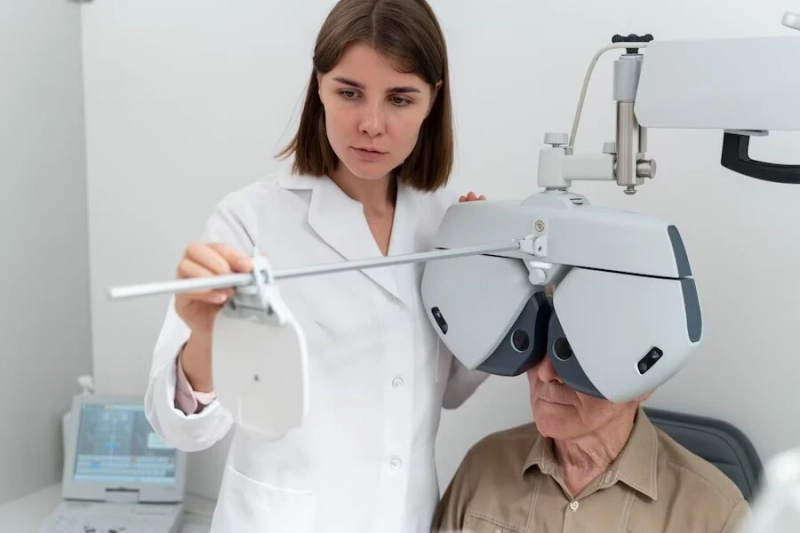You might have developed eye problems or eye disease due to some unfortunate happening or a poor lifestyle. Wearing glasses, and contact lenses, and having medications like pills or eye drops can cure some diseases. However, a few can be treated only by undergoing some form of eye surgery. One such surgery that is growing in demand is ‘SMILE’.
About SMILE eye surgery
This keyhole laser procedure helps rectify vision problems in those experiencing shortsightedness in higher degrees. SMILE is short for ‘Small Incision Lenticular Extraction’. Being a bloodless procedure, it suits without or with astigmatism. The procedure is even an excellent alternative to LASEK or LASIK treatment. It corrects hypermetropia, myopia, presbyopia, and astigmatism.
How to prepare for the surgery?
The surgeon during the pre-surgery appointment evaluates your eyes. They it is to ensure you don’t suffer from other eye conditions or diseases that might hamper your SMILE surgery prospects. They will make a plan to eliminate lenticules from the eye. They will measure the cornea’s thickness and curvature and ensure it is just appropriate to undergo the operation.
What will your provider suggest for surgery preparation?
The surgeon will want to know about the over-the-counter supplements and prescribed medications you are already taking. Based on their findings they will suggest what medications to stop before undergoing the procedure. At the same time, they will mention the time by when to stop taking such medications. They will advise whether to stop eating or drinking a day before having the procedure.
Benefits derived from the procedure
Speedy recovery: Post-surgery cover is quick. Less discomfort is experienced as flap creation is not done around the cornea region. Quick procedure: It is quicker when compared to other eye surgeries conducted. It takes approximately 20 to 30 minutes to complete. No dry eyes: After the surgery, patients might experience less dry eyes or discomfort. Fast results: It offers fast results. Approximately, you regain 80% vision within a couple of hours after the surgery. Long-term results: It is another benefit derived from the procedure. You can enjoy the results for a long time. No flap complications: Since a flap is not created during the surgery, you won’t experience any complications. It includes flap moving or folding. Smile eye surgery cost in India is reasonable, thus making it easily accessible for the average person.Eliminate the need to use contact lenses or glasses: You can have a better view of everything even at night time without using the accessories. Universally accepted treatment: Being a minimal laser eye surgery, doctors advise it to those who are not eligible for other eye surgeries.
What does the procedure involve?
The ophthalmologist evaluates your eyes thoroughly before performing the surgery. They make sure you don’t suffer from eye problems, especially those developing in the cornea region. Your vision will be examined to ensure no changes have occurred in the last few years. Moreover, they will check cornea thickness and take precise measurements. Being a computer-guided surgery, it takes approximately 20 to 30 minutes. Local anesthesia is administered to make the eyes numb and ready to be operated. You will not feel any discomfort during the procedure. The doctor will use a femtosecond laser to cut tiny lens-shaped discs within the cornea region. A small incision of 2-3 mm wide is cut to extract the disc. It is done carefully, maintaining great precaution. The surgery helps reshape the cornea and reverses the eye’s refractive error. You can derive optimum results and better eyesight after the procedure.
Eligibility to undergo SMILE surgery
You should be 22+ years old and not experience a significant change in your eye prescription within a year. You should have healthy corneas. Your prescription range should fall between nearsightedness which is around 1 and 10 to astigmatism of about 3 diopters. You should be aware of the limitations, risks, and benefits offered by the procedure.
Who is not eligible for the procedure?
Those having severe glaucoma, are breastfeeding or pregnant, and experience frequent prescription changes for contacts or glasses are not suggested. It even includes those with scars developing on the cornea, who have severe glaucoma, keratoconus, or certain skin disorders. Doctors do not suggest it to those having cataracts affecting vision, uncontrolled diabetes, suffering from certain eye infections, injuries, or surgeries.


